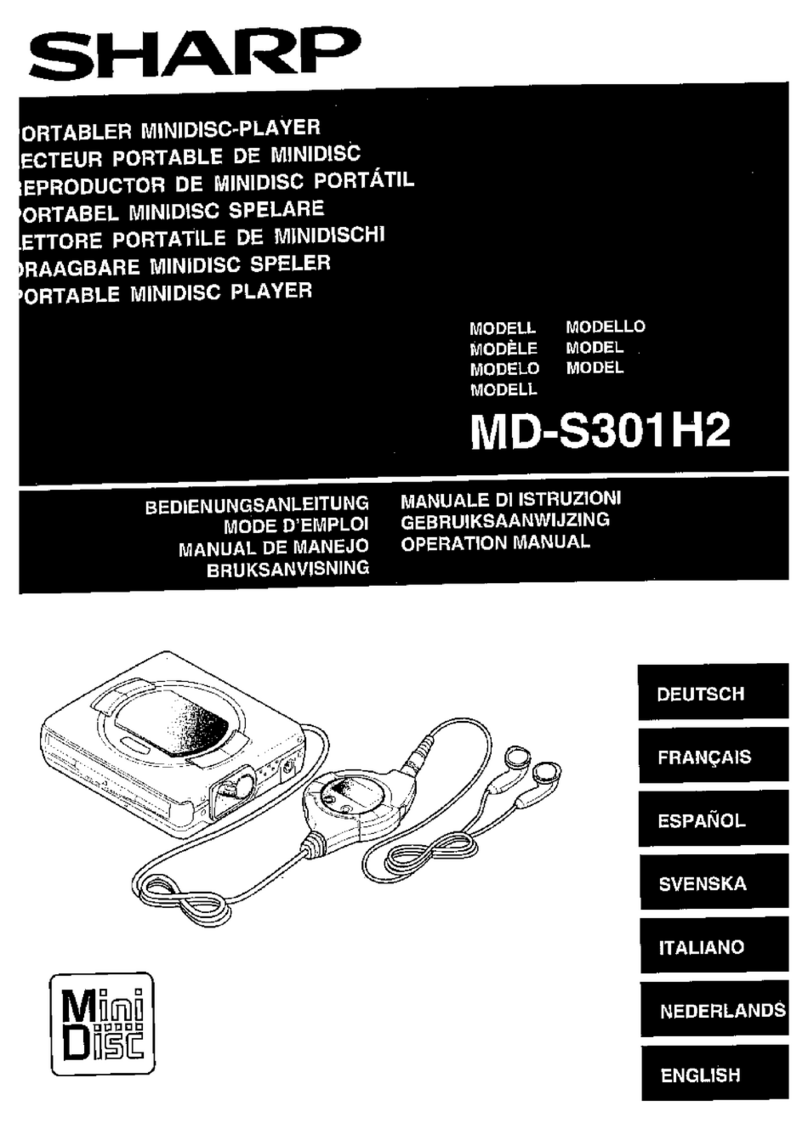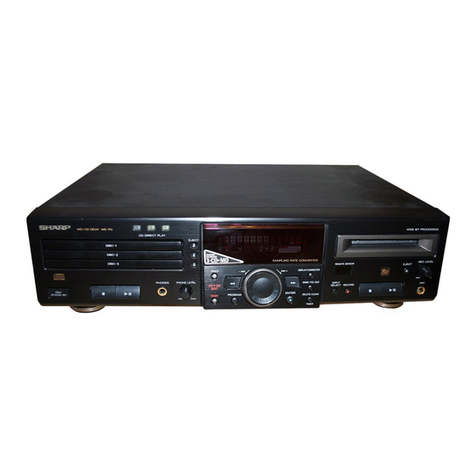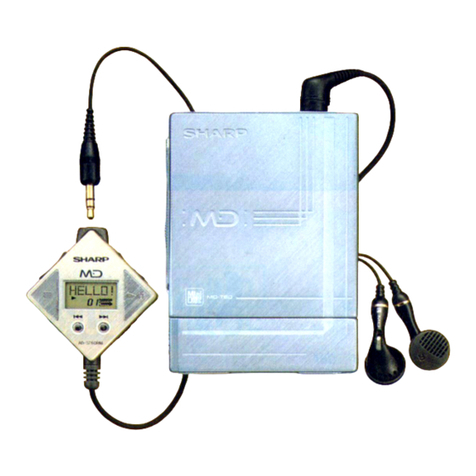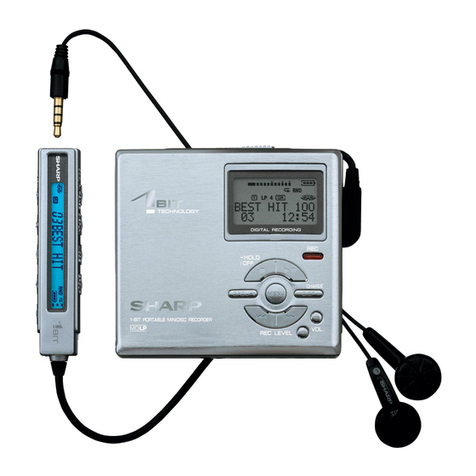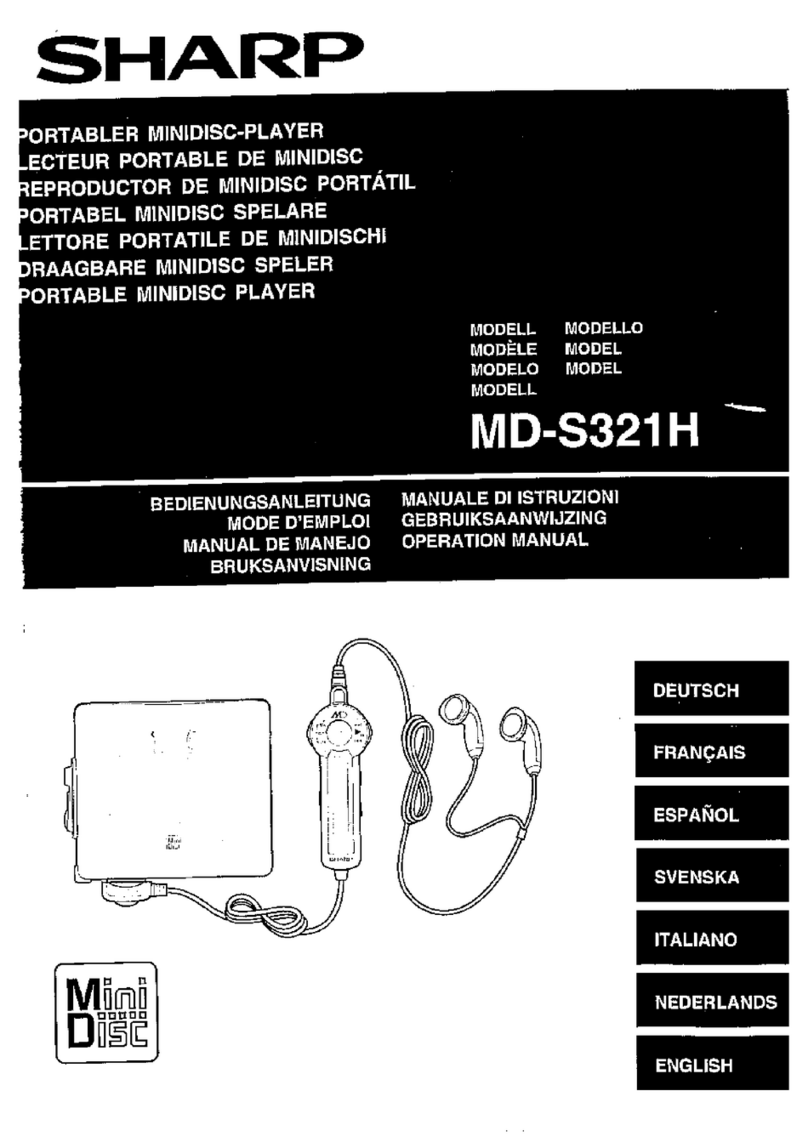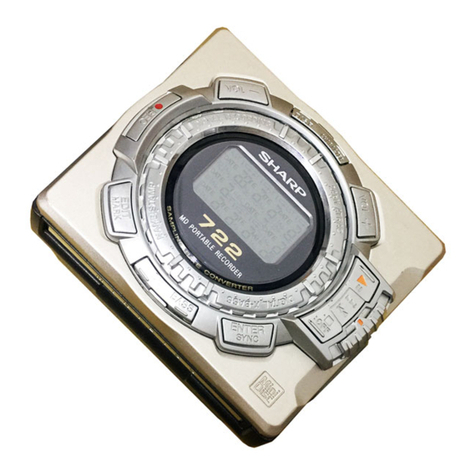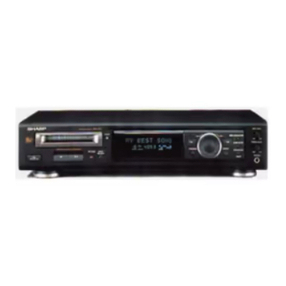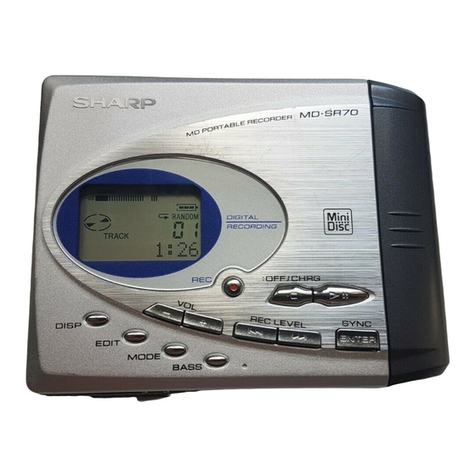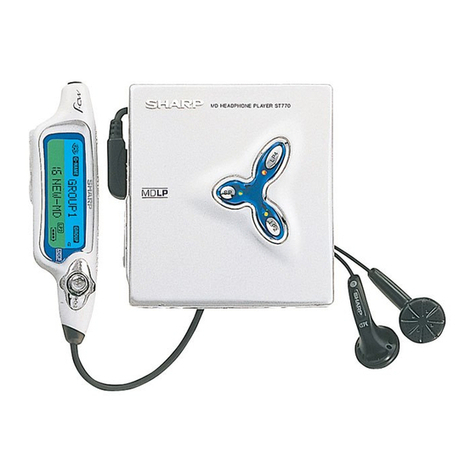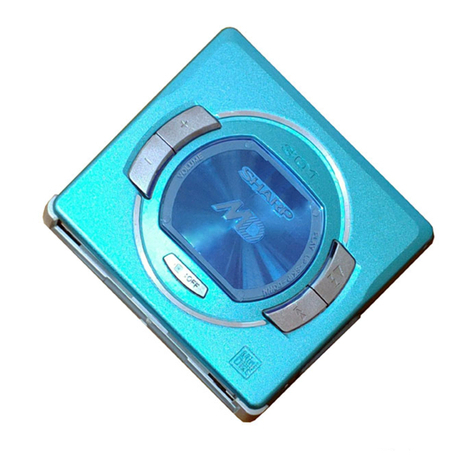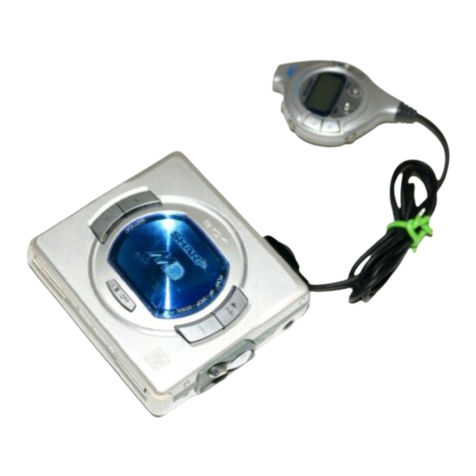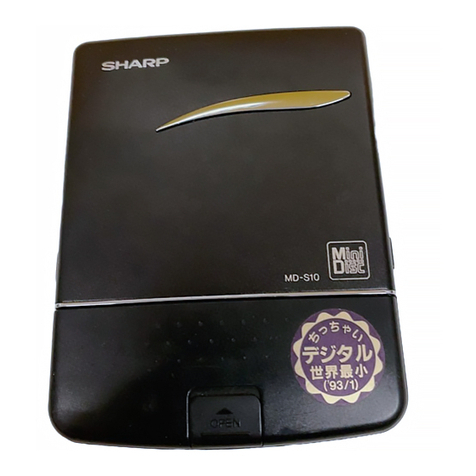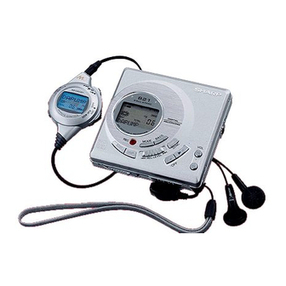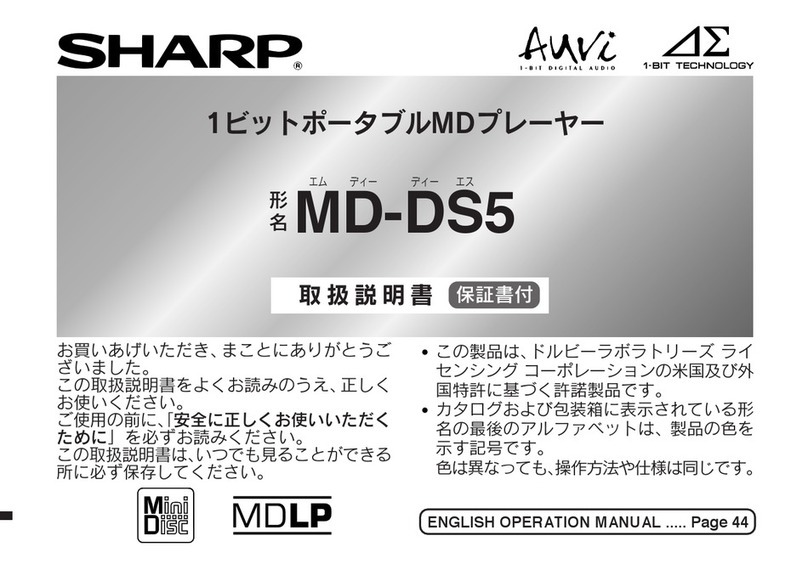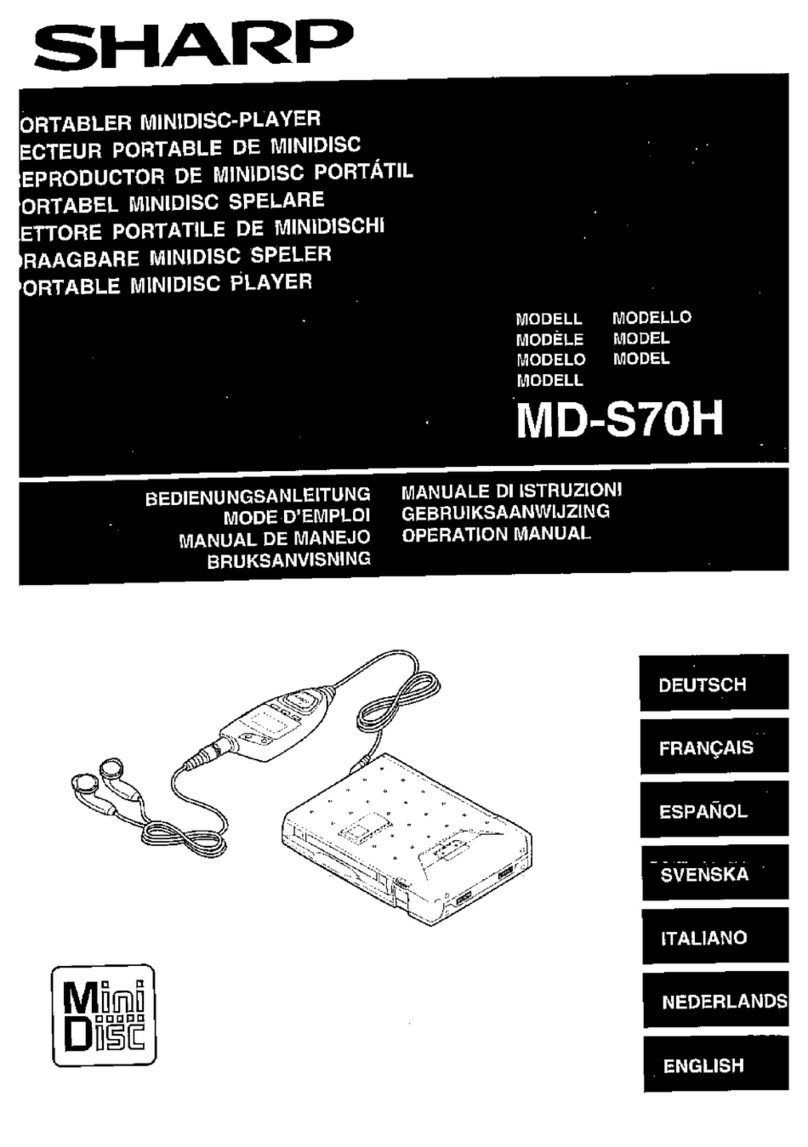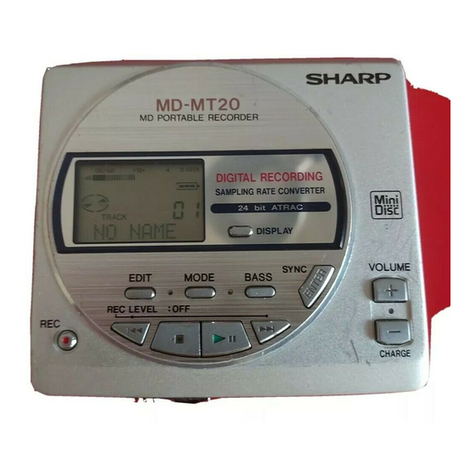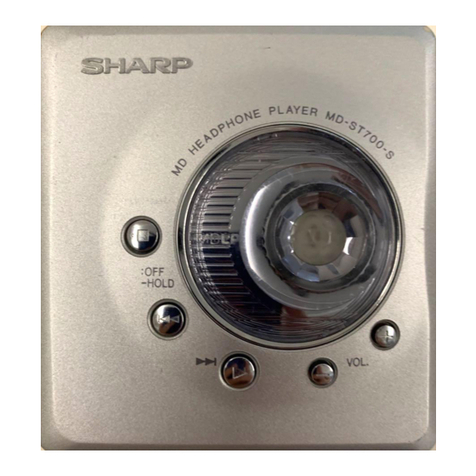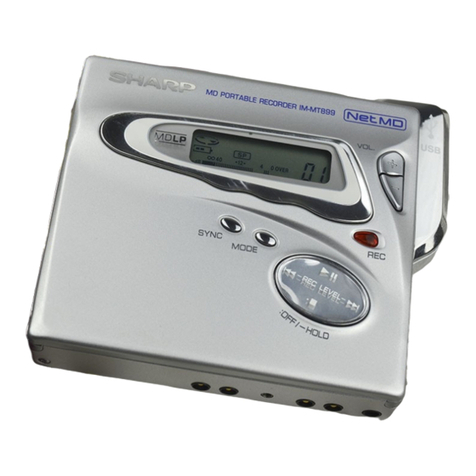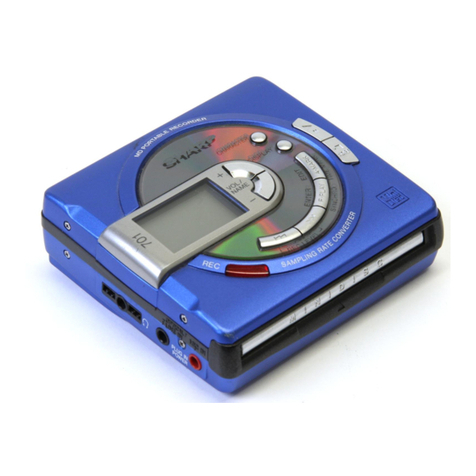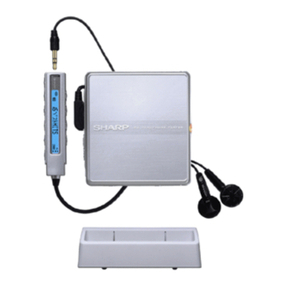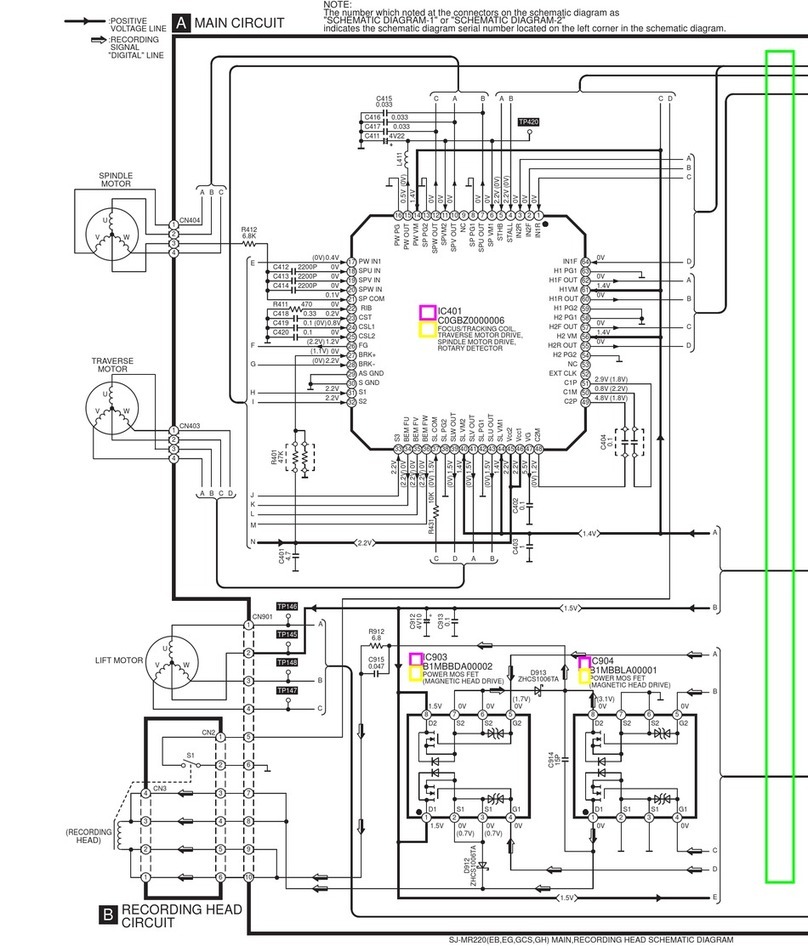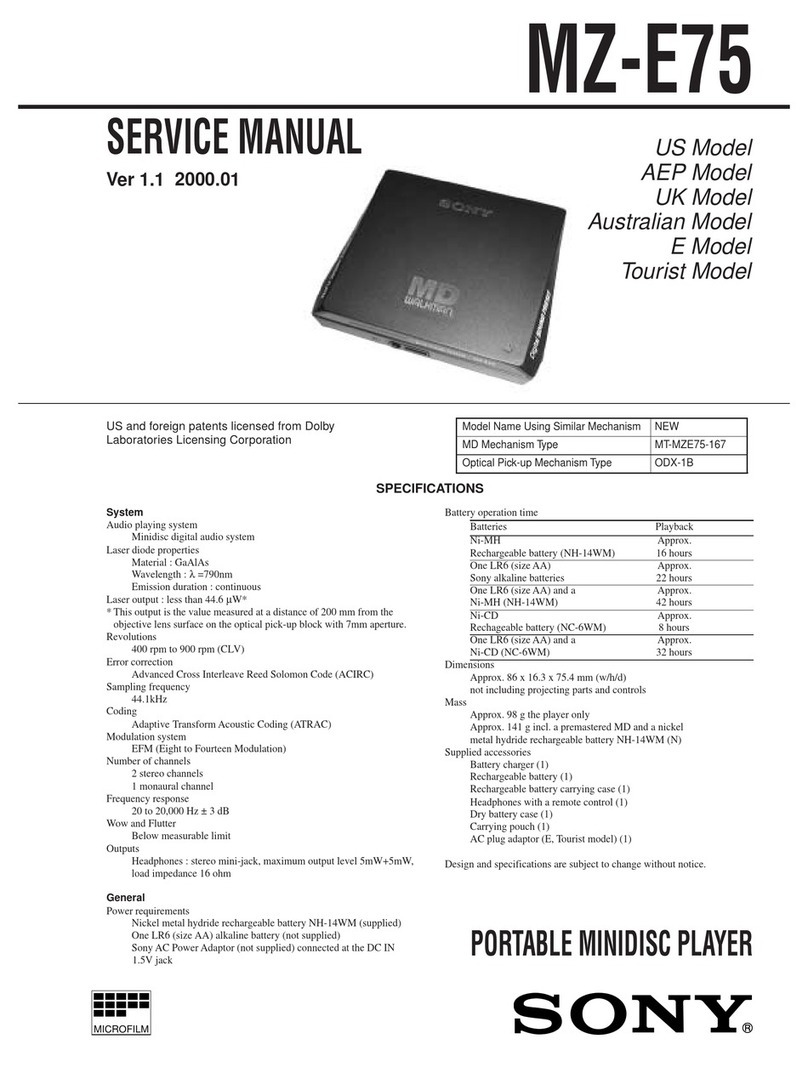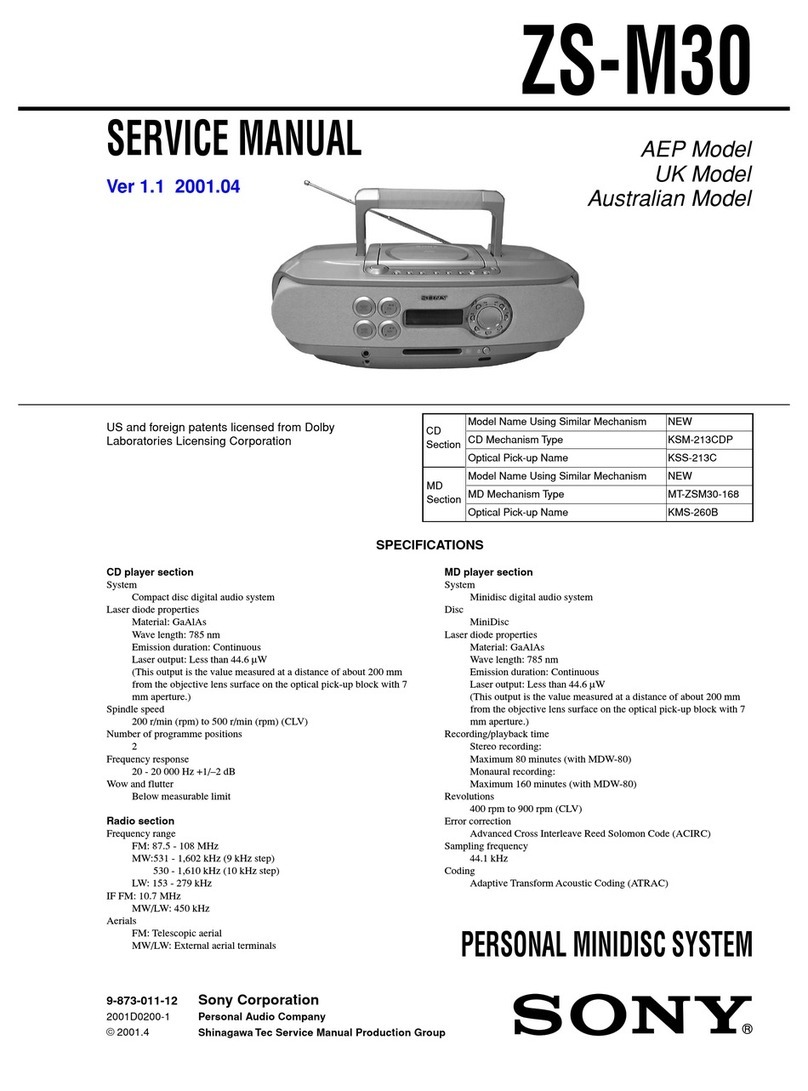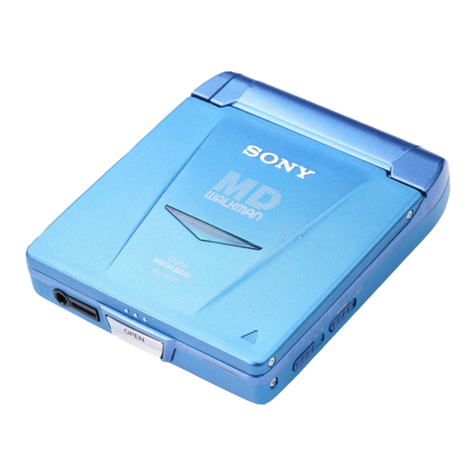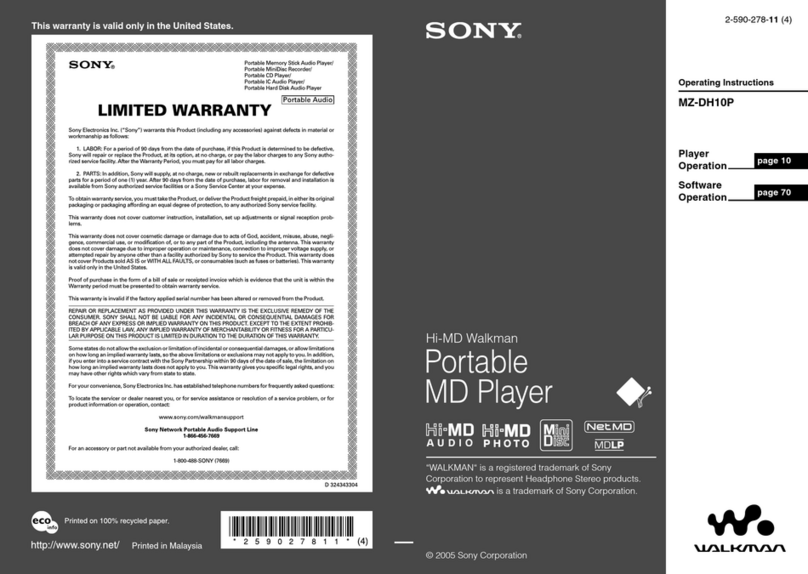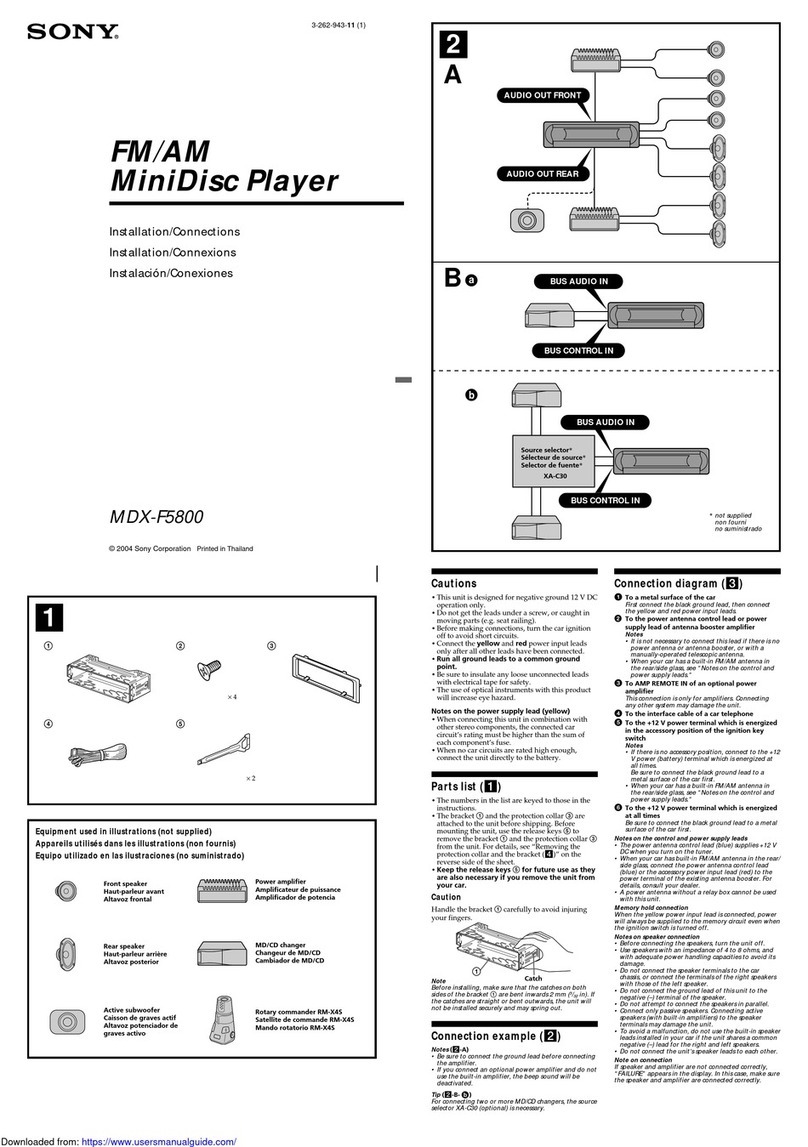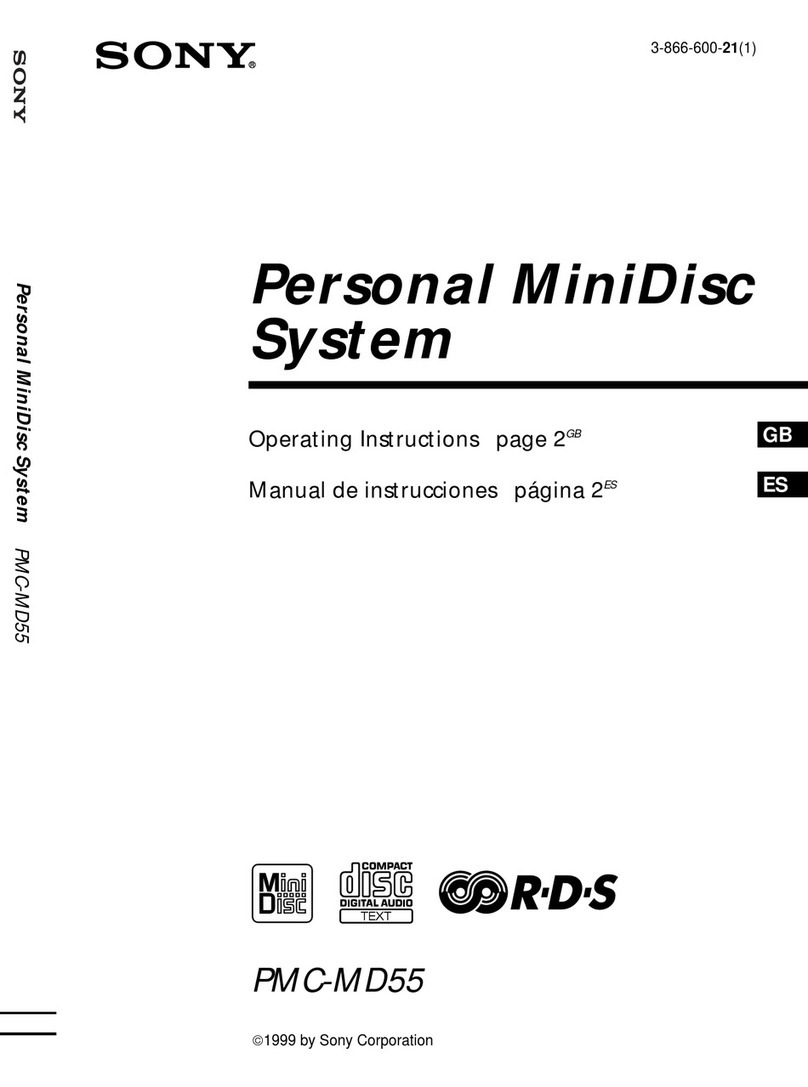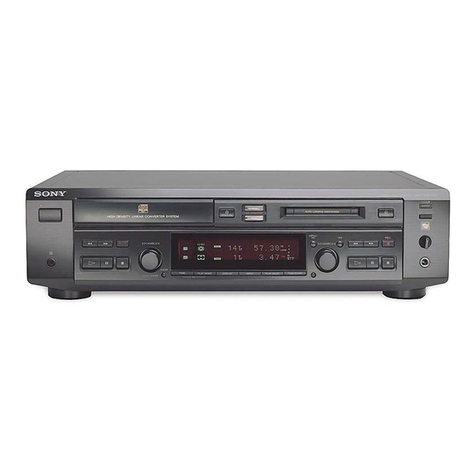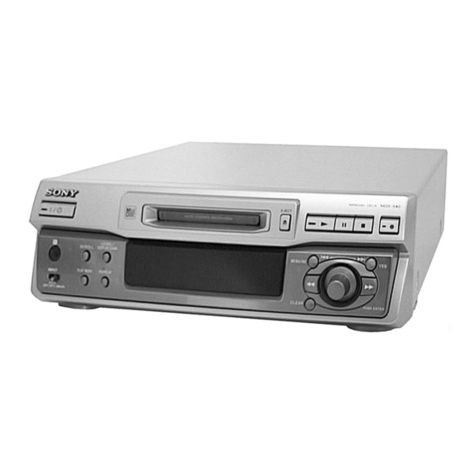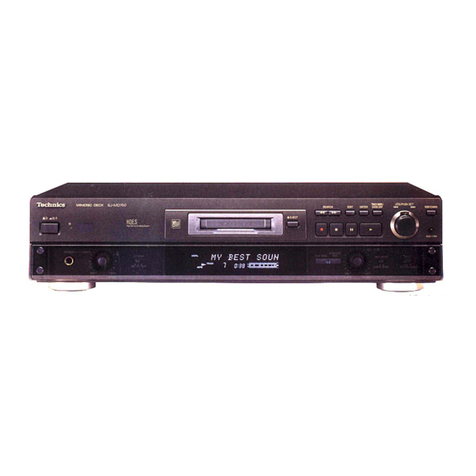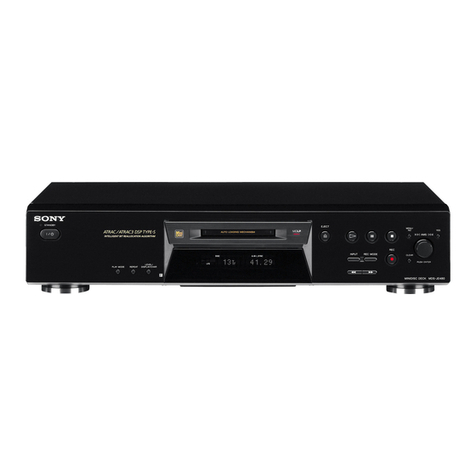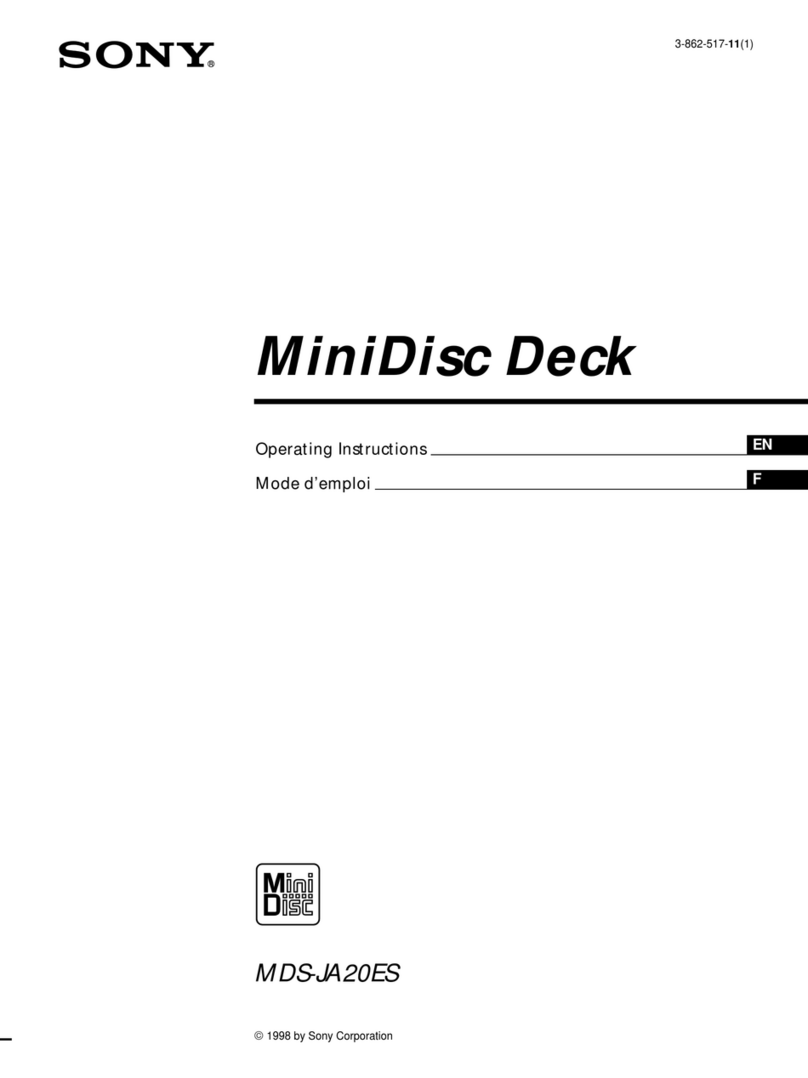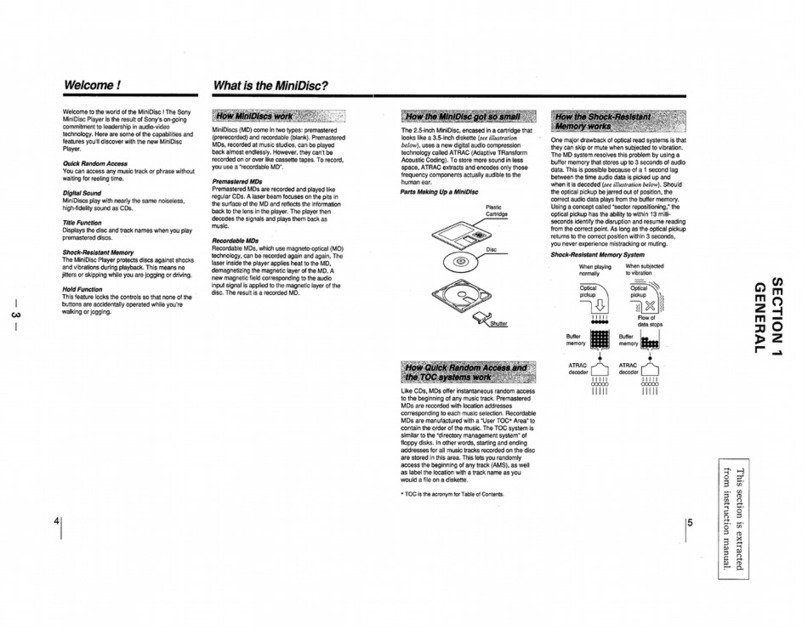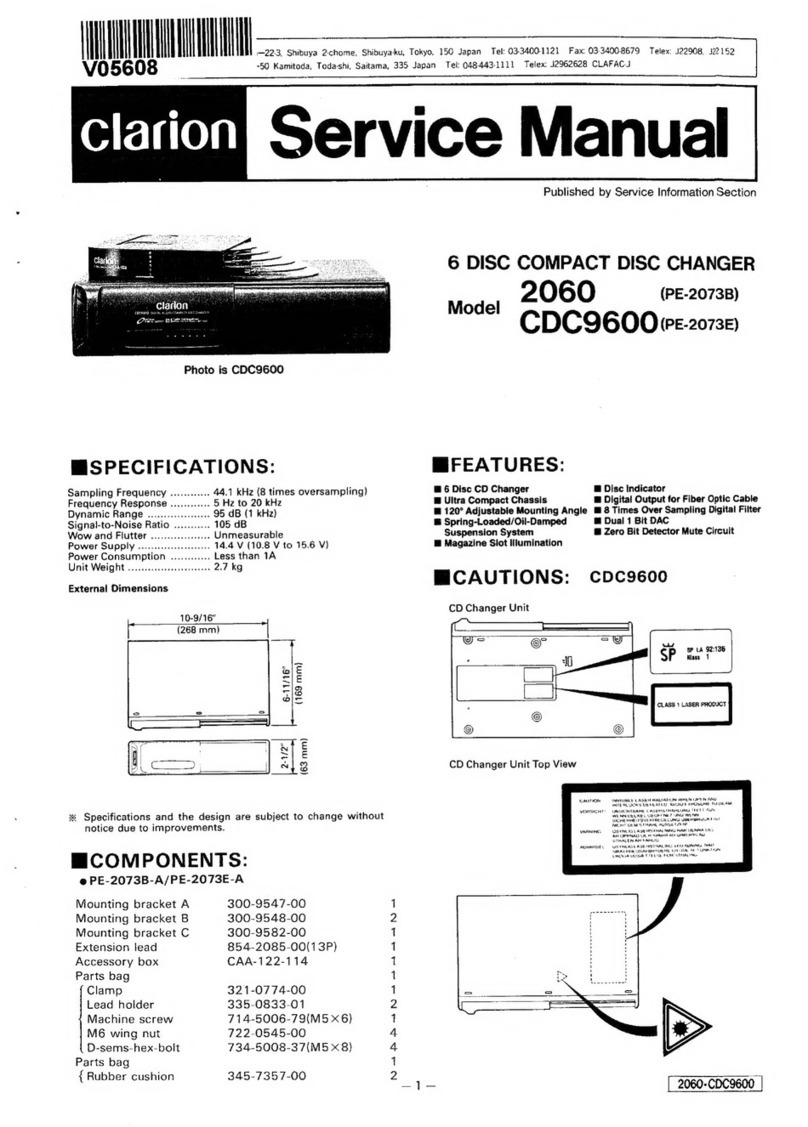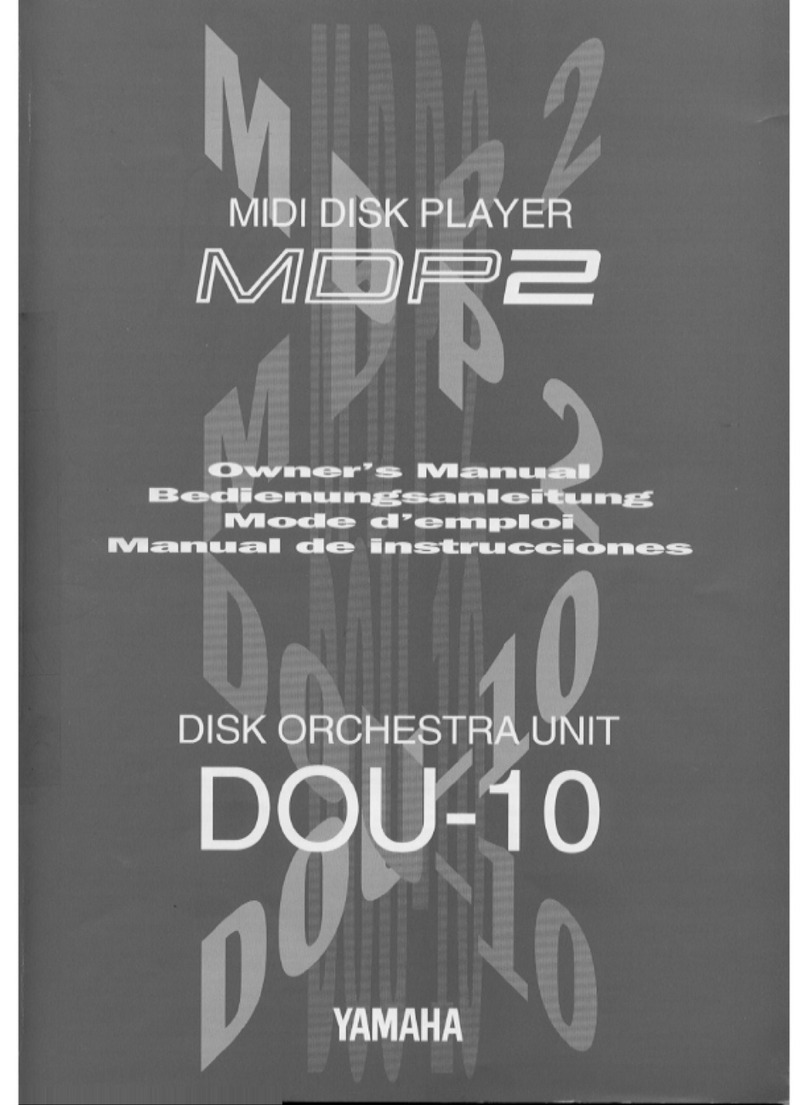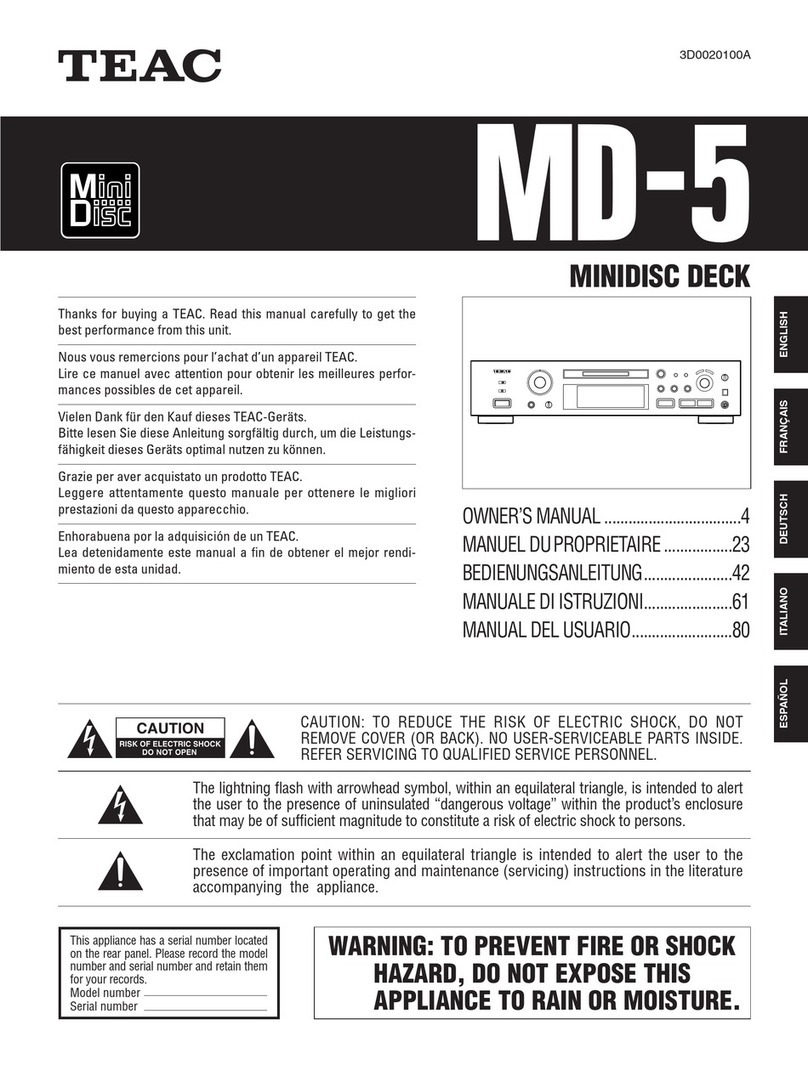
MD-MT831H/W
– 12 –
Entering the TEST mode
1. Setting at port (in standby state, disc-free state or power nonconnected state)
(1) Set the port as follows.
TEST1 : "Low"
TEST0 : "High"
(2) Press the PLAY button in the standby state (it is allowed to insert the disc or to connect the power supply).
(3) Test Mode STOP [ T E S T _ ]
2. Setting by special button operation (in standby state)
Test mode: Perform it with the remote control.
(1) Press and hold the "PLAY MODE" button on the remote control and press the "PLAY" button.
(2) Release only the "PLAY MODE" button.
(3) Press and hold only the "PLAY" button and press the "VOL-" button.
(4) When the EL on the remote control turns on, release the "VOL-" button
*Since the unit is changed to the setting for production line inspection , be sure to set it to the default setting state in the following default
setting procedure before returning it to the user.
(5) Normal mode setting initialization (BASS setting, VOL setting, etc.)
(6) Indication of microcomputer version for one second [ X X X X X X ]
(7) Whole LCD lighting for 2 seconds
(8) Test Mode STOP [ T E S T _ ]
*When the PLAY button is pressed during indication (6) and (7), the process proceeds to (8).
1 High reflection disc MMD-110 (TEAC Test MD) 88GMMD-110
2 Low reflection disc MMD-213A (TEAC Test MD) 88GMMD-213A
3 Low reflection disc Recording minidisc UDSKM0001AFZZ
ADJUSTMENT
Test disc
MD adjustment needs two types of disc, namely recording disc (low reflection disc) and playback-only disc (high
reflection disc).
Type Test disc Parts No.
Note: Use the low reflection disc on which music has been recorded.
Leaving the TEST mode
(1) Press the STOP button in the TEST mode stop state or version indicating state or whole LCD lighting state.
(2) EEPROM rewrite-enable area updating, adjustment error setting .
(3) Change to standby state
Test Mode
Shipping setting method
Press and hold the "VOLUME-DOWN" and "PLAY" buttons on the main unit at the same time, supply power from the DC IN plug [INIT], then
stop the power supply from the DC IN plug after the "BYE OK" display disappears.
1. AUTO 1 Mode • Perform preliminary automatic adjustment.
• If the combination of mechanism and pickup
PWB has been changed, be sure to start from
AUTO1.
2. AUTO 2 Mode
• Perform ATT (attenuator) automatic adjustment.
• Perform continuous playback (error rate display,
jump test)
3. TEST-PLAY Mode
• Continuous playback from the specified address
is performed.
• 1 line, 10 lines or 384 lines manual jump is
performed.
• C1 error rate display (pit section), ADIP error
rate display (groove section)
• The temperature correction is performed only when
servo start is performed, but the posture correction
is not performed during continuous playback.
4. TEST-REC Mode
• Continuous record from the specified address
is performed.
• Change of record laser output(servo gain is also
changed according to laser output).
• The temperature correction is performed only
when servo start is performed, but the posture
correction is not performed during continuous
recording.
5. MANUAL 1 Mode
• Temperature is displayed. (Updating in real time)
• Seeing the displayed adjustment value, perform
preliminary manual adjustment.
(Error rate indication, jump test
6. MANUAL 2 Mode
• Temperature is displayed. (Updating in real time)
• Seeing the displayed adjustment value perform
manfully the preliminary adjustment.
(Error rate indication, jump test)
• Continuous playback is performed
(error rate display, jump test).
7. ERROR INFORMATION
• Error information is displayed.
Mode • Error information is initialized
8. NORMAL Mode
• The mode is changed from the TEST mode to
the normal mode without adjustment.
• In the normal mode the internal operation mode,
memory capacity, etc. areindicated.
• In the normal mode both temperature correction
and posture correction are perfomed.
9. EEPROM Mode
• Factors of digital servo are changed manually.
(Each servo is turned on individually.)
• Cut-off frequency of BASS1, BASS2 and BASS3
is selected manually.
• Temperature detection terminal voltage is
measured, and the reference value is set.
• Defaults are selected and set.
• Setting of EEPROM protect area is updated.
(In case of protect releasing)
10. INNER Mode
• Determine the position where the INNER switch
is turned on. (only high reflection disc).
• The temperature correction is performed only
when servo start is performed, but the posture
correction is not performed.
EEPROM version
Destination
Microcomputer version
